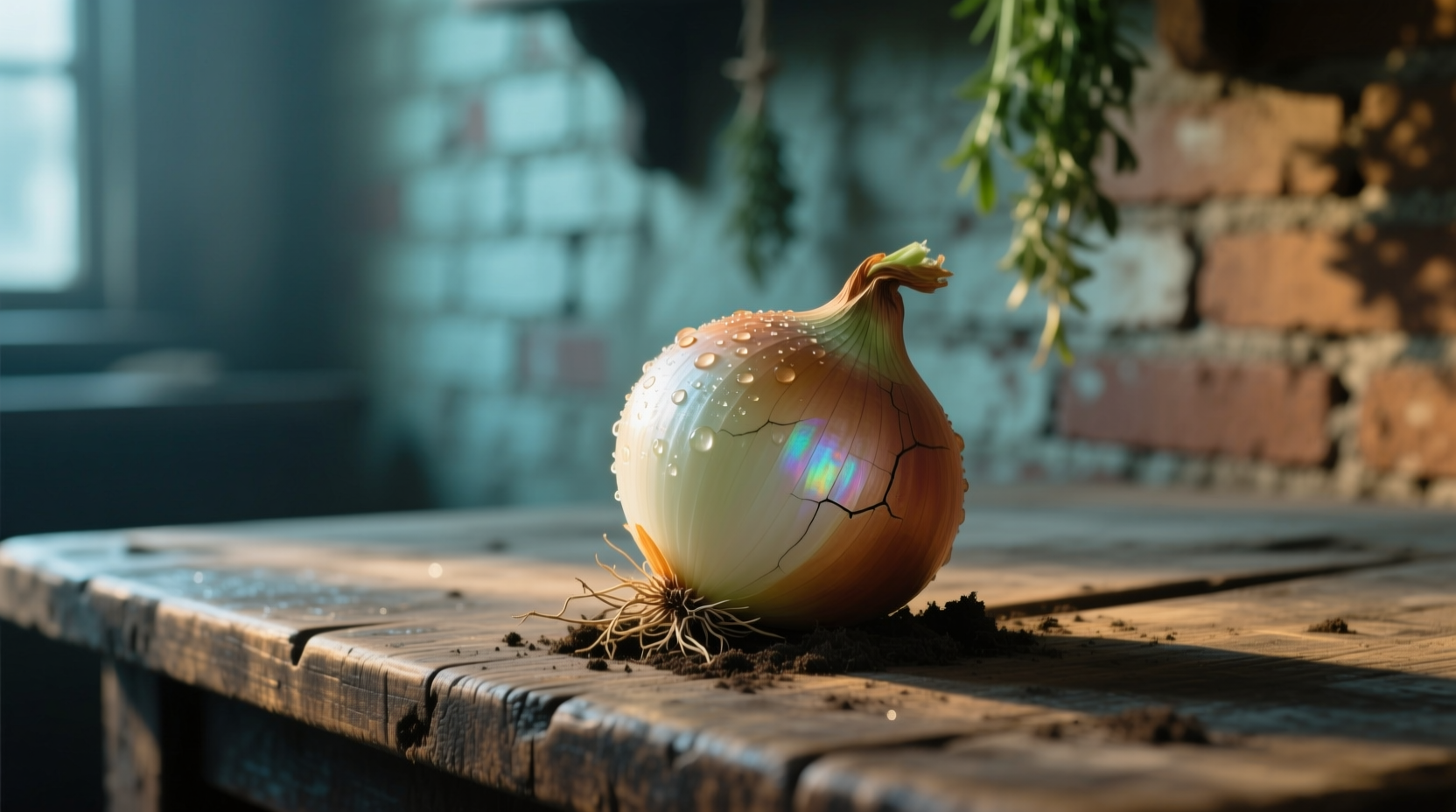A medium-sized raw onion (110g) contains approximately 44 calories, with 10.3g of carbohydrates, 1.9g of fiber, and virtually no fat. This makes onions an excellent low-calorie addition to virtually any diet, providing substantial nutritional benefits without significant caloric impact.
Understanding the precise nutritional profile of onions helps health-conscious eaters make informed dietary choices. Whether you're managing weight, controlling blood sugar, or simply aiming for a balanced diet, knowing exactly how many calories are in onions and their complete nutritional composition provides valuable insight for meal planning.
Onion Nutrition: Breaking Down the Numbers
When examining calories in onion per 100g, the USDA FoodData Central database reveals consistent nutritional patterns across varieties. Raw onions contain about 40 calories per 100 grams, with the majority coming from carbohydrates in the form of natural sugars and dietary fiber.
| Nutrient | Per 100g Raw Onion | Per Medium Onion (110g) |
|---|---|---|
| Calories | 40 kcal | 44 kcal |
| Carbohydrates | 9.3g | 10.3g |
| Dietary Fiber | 1.7g | 1.9g |
| Sugars | 4.2g | 4.6g |
| Protein | 1.1g | 1.2g |
| Fat | 0.1g | 0.1g |
This comprehensive nutritional breakdown comes directly from the USDA FoodData Central, the authoritative source for food composition data in the United States. The values represent raw yellow onions, the most commonly consumed variety in North America.
Comparing Onion Varieties: Calorie Differences
While most people wonder about how many calories in a medium onion, it's important to recognize that different onion varieties have slightly different nutritional profiles:
- Yellow onions (most common): 40 calories per 100g
- Red onions: 42 calories per 100g with slightly higher antioxidant content
- White onions: 43 calories per 100g, marginally sweeter
- Green onions/scallions: 32 calories per 100g, significantly lower calorie density
- Shallots: 72 calories per 100g, nearly double the caloric content
The minor variations in onion nutrition facts compared to other vegetables become more significant when considering preparation methods. Cooking onions, particularly caramelizing them, concentrates natural sugars and slightly increases caloric density per volume as water content reduces.

Onions in Dietary Context: Practical Applications
For those tracking onion carbohydrate content for diabetes management or low-carb diets, understanding serving sizes is crucial. A standard 1/2 cup serving of chopped raw onion contains approximately 61 calories and 14.3g of carbohydrates, with 2.7g coming from fiber.
Nutritionists at the Academy of Nutrition and Dietetics recommend incorporating onions into meals for their flavor-enhancing properties without significant caloric penalty. "Onions provide substantial flavor complexity while contributing minimal calories, making them ideal for those seeking to reduce overall calorie intake without sacrificing taste," explains registered dietitian Maria Rodriguez.
Health Benefits Beyond Calories
The question "are onions good for weight loss?" extends beyond simple calorie counting. Onions offer several compounds that support metabolic health:
- Quercetin: A flavonoid antioxidant with anti-inflammatory properties
- Organosulfur compounds: Associated with cardiovascular benefits
- Prebiotic fiber: Supports gut microbiome diversity
- Vitamin C: Contributes to immune function (7.4mg per 100g)
Research published in the National Institutes of Health indicates that regular onion consumption correlates with improved cardiovascular markers and better blood sugar regulation, benefits that extend far beyond their modest caloric contribution.
Common Misconceptions About Onion Nutrition
Several myths persist about nutritional value of red onions vs white onions. While red onions contain slightly more antioxidants, the differences are minimal in typical serving sizes. Both varieties provide comparable nutritional benefits with negligible caloric differences.
Another misconception involves cooked versus raw onions. While cooking does reduce some heat-sensitive nutrients like vitamin C, it increases the bioavailability of certain antioxidants. The onion calorie count remains relatively stable regardless of preparation method, though caramelized onions become more concentrated as water evaporates.
Practical Tips for Using Onions in Healthy Eating
Understanding the precise calories in onion per 100g helps in meal planning. Here are practical applications:
- Use raw onions in salads for maximum nutrient retention
- Add onions early in cooking to build flavor foundations without added fats
- Pair onions with healthy fats like olive oil to enhance absorption of fat-soluble compounds
- Measure portions when caramelizing to account for reduced volume
- Substitute some higher-calorie ingredients with onions for flavor complexity
Professional chefs often use the "onion base" technique—sautéing onions slowly to develop natural sweetness—reducing the need for added sugars in dishes. This approach leverages the natural 4-5% sugar content in onions while keeping overall dish calories in check.
Onions Through History: A Nutritional Timeline
The cultivation and understanding of onions' nutritional properties has evolved significantly:
- 5000 BCE: Earliest evidence of onion cultivation in ancient Egypt
- 1500 BCE: Onions documented in the Ebers Papyrus as both food and medicine
- 1st Century CE: Roman naturalist Pliny the Elder records medicinal uses of onions
- 1940s: Scientific identification of onion's sulfur compounds
- 1980s: Research begins on quercetin and other flavonoids in onions
- 2000s: Modern nutritional analysis quantifies precise calorie and nutrient content
This historical perspective shows how our understanding of onion nutrition facts has progressed from general observations to precise scientific measurement, allowing today's consumers to make informed dietary choices based on accurate data rather than tradition alone.
When Onion Nutrition Varies: Important Context
Certain factors affect the onion carbohydrate content and overall nutritional profile:
- Storage conditions: Longer storage increases sugar concentration as starch converts
- Growing season: Fall-harvested onions typically have higher sugar content
- Cooking method: Boiling leaches nutrients into water, while roasting concentrates flavors
- Preparation technique: Finely chopped onions have slightly higher surface area to volume ratio
For those strictly monitoring carbohydrate intake, these contextual factors become relevant when calculating precise nutritional values for meal planning.











 浙公网安备
33010002000092号
浙公网安备
33010002000092号 浙B2-20120091-4
浙B2-20120091-4